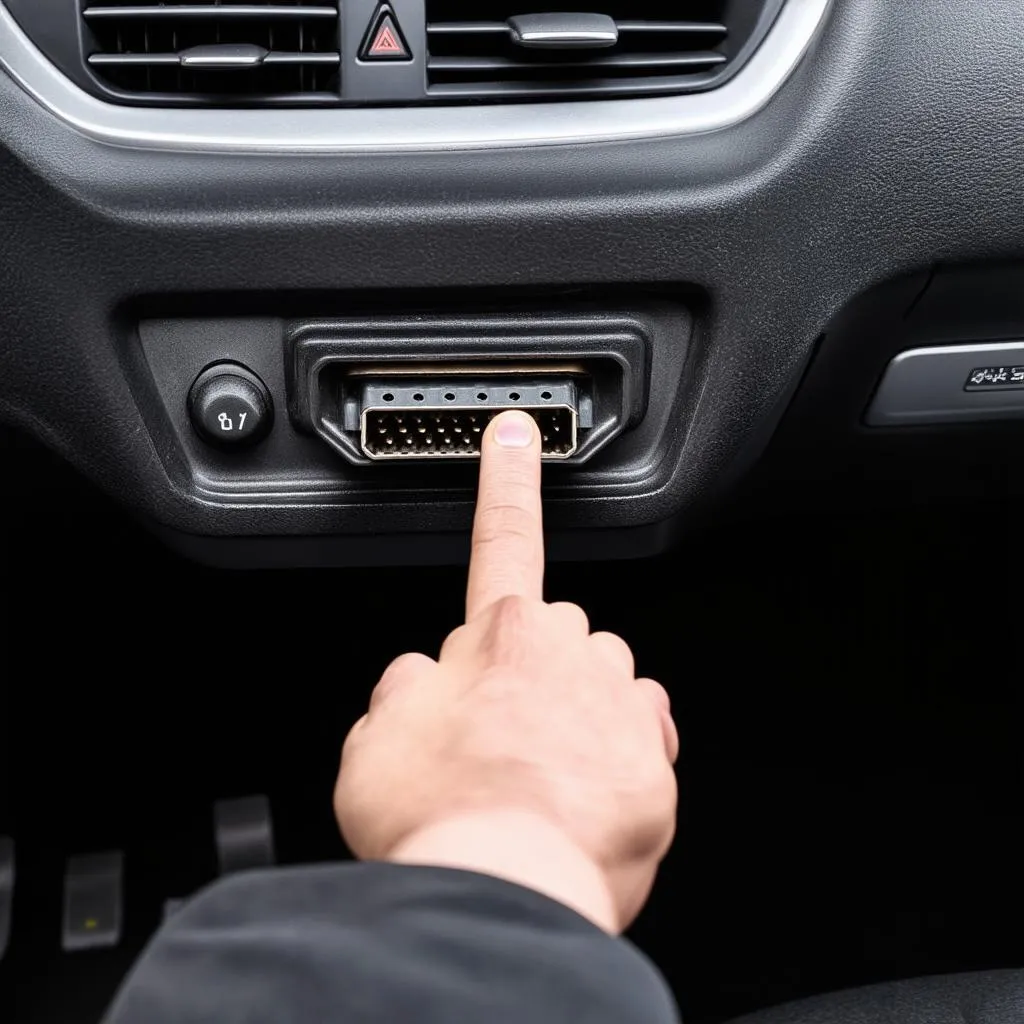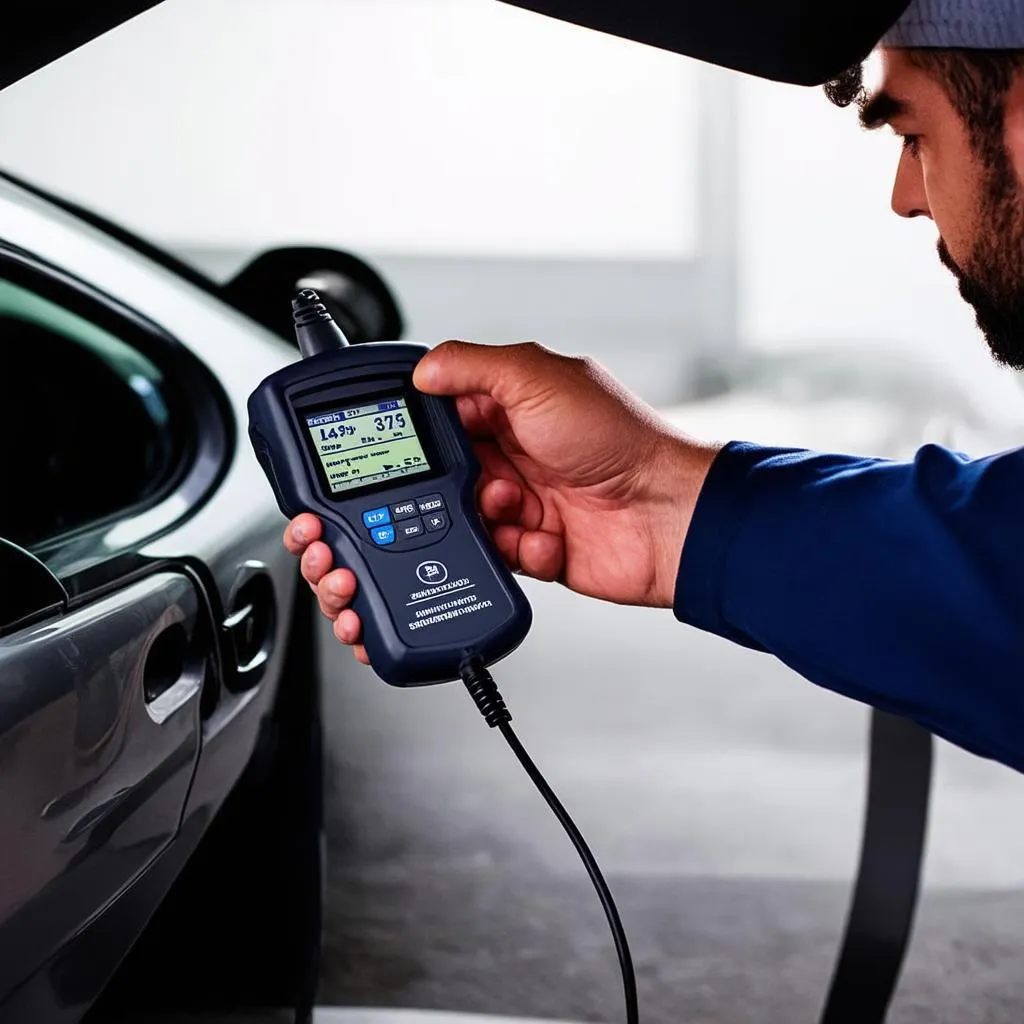Imagine this: you’re driving down the road, and suddenly, that dreaded “check engine” light pops up on your dashboard. Frustrating, right? Before panic sets in, remember that this light is like a messenger, albeit a cryptic one. It’s trying to tell you something is wrong with your car. But how do you decipher its message? The answer lies in a clever technology hidden within your vehicle, the OBD protocol.
What is this OBD Protocol, Anyway?
OBD, short for On-Board Diagnostics, is a standardized system that allows external electronics, like a mechanic’s diagnostic tool, to tap into your car’s computer system. Think of it as a universal language that all cars speak, regardless of their make or model.
At the heart of this system is the OBD protocol, a set of rules or procedures that dictate how information is exchanged between your car’s computer and the diagnostic tool. It’s what makes it possible for a mechanic to plug in a scanner and read those cryptic error codes that illuminate your check engine light.
Diving Deeper: Understanding OBD-II and its Importance
The OBD protocol you’re most likely to encounter today is OBD-II, introduced in 1996. This standardized protocol revolutionized car repairs, making diagnostics faster, easier, and more affordable.
Here’s why OBD-II is such a big deal:
- Standardization: Before OBD-II, each car manufacturer had its own proprietary diagnostic system. This meant mechanics needed a multitude of adapters and software to service different vehicles. OBD-II leveled the playing field, making diagnostics more streamlined and efficient.
- Detailed Insights: OBD-II provides access to a wealth of data about your car’s engine, transmission, emissions system, and more. This allows mechanics to pinpoint problems with greater accuracy and efficiency.
- Empowerment for Car Owners: OBD-II isn’t just for mechanics! Affordable OBD-II scanners are readily available, empowering car owners to diagnose problems themselves or provide valuable information to their mechanics.
Common Questions about OBD Protocol:
-
Where can I find the OBD-II port in my car?
The OBD-II port is typically located under the driver’s side dashboard, often near the steering column. However, its exact location can vary depending on the car model. -
Can I use any OBD-II scanner with my car?
While most OBD-II scanners will work with most modern cars, compatibility can sometimes be an issue. Factors like car make, model, and year can influence compatibility. It’s always a good idea to check the scanner’s specifications or consult with a specialist. -
Is using an OBD-II scanner difficult?
Not at all! Most OBD-II scanners are user-friendly. They typically involve plugging the scanner into the OBD-II port and following the on-screen instructions. However, interpreting the data retrieved from the scanner might require some technical knowledge.
Beyond Diagnostics: The Expanding Role of OBD
While OBD’s primary function is diagnostics, its potential extends far beyond just reading error codes. With the rise of connected cars and telematics, the OBD port is evolving into a versatile data hub, paving the way for exciting new applications, such as:
-
Real-time Vehicle Monitoring: Fleet management companies can use OBD data to track vehicle location, fuel consumption, driver behavior, and more.
-
Insurance Telematics: Some insurance companies offer usage-based insurance programs that leverage OBD data to assess driving habits and determine insurance premiums.
-
Performance Tuning: Enthusiasts can use OBD scanners and tuning software to modify engine parameters and enhance vehicle performance.
The OBD Protocol and Your Car’s Well-being
Just like a doctor uses a stethoscope to diagnose a patient’s health, mechanics rely on the OBD protocol to understand your car’s well-being. It’s a vital communication link that helps keep your car running smoothly and safely. Understanding the basics of OBD can empower you to make informed decisions about your car’s maintenance and repairs.
 OBD Port Location
OBD Port Location
 Mechanic Using OBD Scanner
Mechanic Using OBD Scanner
Need Help Navigating the World of OBD?
If you’re feeling overwhelmed by technical jargon or unsure about which OBD scanner is right for you, don’t worry! Our team of automotive experts is here to help. Contact us on WhatsApp at +84767531508 for personalized assistance and guidance. We’re available 24/7 to answer your questions and help you find the perfect diagnostic tool for your needs.
Interested in learning more about specific car models and their OBD protocols? Check out our articles on the 2008 4Runner, Fiat 500, and Audi A3.
Your car’s well-being is our priority. Let us help you keep your vehicle running smoothly and safely for miles to come!